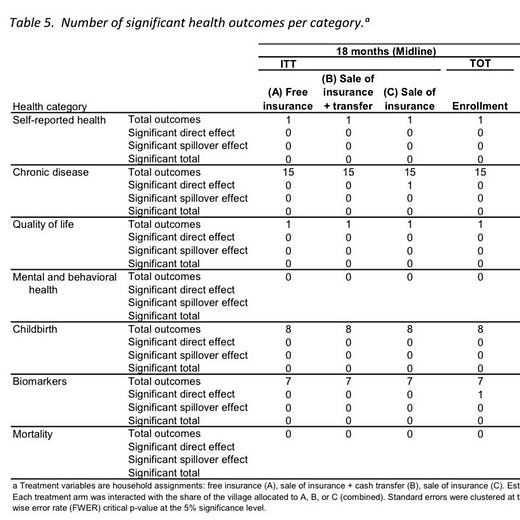Best of #econtwitter - Week of December 12, 2021
Dec 13, 2021
Welcome readers old and new to this week’s edition of Best of Econtwitter. Thanks to those sharing suggestions, over email or on Twitter @just_economics.
Paper summary threads

Gabriella Conti@Gabri_EllaConti
📣🟧🟩🟨📣🟧🟩🟨📣
V. happy that paper 1️⃣ of a large-scale multi-arm RCT of 🏥 insurance in India 🇮🇳 w/ @anup_malani @cynthia_kinnan @AlessandraVoena et al. is out as WP!
👉🏻ifs.org.uk/publications/1… @TheIFS
✅ Uptake ⬆️
✅ Access ⬆️ use
✅ +ve spillovers
❌ Health ↔️
👇🏻




8:35 AM · Dec 8, 2021
7 Reposts · 14 Likes
^forgive the rare paper commentary but: amazing experiment, would this have gotten more retweets if it had been in Oregon

Stefanie Stantcheva@S_Stantcheva
Do taxes affect innovation? Over the course of the 20th century, personal & corporate income taxes have significantly shaped innovation in the US, as we show in a paper with @ufukakcigit, Tom Nicholas & @JohnRGrigsby in @QJEHarvard. scholar.harvard.edu/files/stantche… A short thread🧵[1/17]

8:30 PM · Dec 8, 2021
88 Reposts · 345 Likes

Stefanie Stantcheva@S_Stantcheva
MACRO results: personal & corporate income taxes have significant negative effects on the quantity of innovation and on the number of inventors residing in a state. Elasticities range from 0.8 to 1.8 for pers’l net-of-tax rates and 1.3 to 2.8 for corporate taxes. [9/17]

8:31 PM · Dec 8, 2021
8 Reposts · 13 Likes

Robert Dur@DurRobert
How much should we trust experts' predictions about the effects of behavioral interventions?
Megastudy by @katy_milkman et al finds:
🔹experts are about 10 times too optimistic about effect sizes
🔹no correlation between predicted and actual effects
nature.com/articles/s4158…


10:31 AM · Dec 9, 2021
16 Reposts · 44 Likes

Ziad Obermeyer@oziadias
Your doctor sends you for a lab test.
Ever wondered if the outside temperature on the day of the test changes its result?
Neither did @devingpope or I… until we did this study!
Turns out, temperature distorts results
Thread—new paper in @MedCellPress

Cell Press @CellPressNews
Ambient temperature influences the results of some of the most used laboratory tests, and these distortions likely affect medical decision-making, including whether to prescribe medications. Read more in @MedCellPress here: https://t.co/xFw646sycI
@oziadias, @Devin_G_Pope https://t.co/7EOePmvjau
6:02 PM · Dec 10, 2021
60 Reposts · 202 Likes

Kevin Chen@jiafengchen42
Excited to share a new working paper taking a closer look at causal inference in school choice settings, where students are matched to schools via algorithms. The paper derives the identified causal estimands under heterogeneous treatment effects (1/n)
arxiv.org/abs/2112.03872

3:27 AM · Dec 8, 2021
32 Reposts · 170 Likes

Zachary Bleemer@zbleemer
**New paper** Over the past 20 years (but not before!), Black and Hispanic college graduates have been steadily earning degrees in relatively lower-paying majors.
The main culprit? An increasingly-common public university policy.
A thread. #EconTwitter zacharybleemer.com/wp-content/upl…

2:09 PM · Dec 8, 2021
336 Reposts · 1.01K Likes

Matt Darling 🌐💸🌇@besttrousers
"Our conclusion is that the main contribution of the Malaney-Weinstein work is that it provides a striking example of how to obscure simple concepts through an uneconomical use of gauge theory."

Timothy Nguyen @IAmTimNguyen
Published on the arxiv today is my response to @PiaMalaney + @EricRWeinstein's work on "Economics as Gauge Theory" which Eric Weinstein presented at UChicago last month: https://t.co/AlhcudavoX Summary of the objections is as follows: (1/n) https://t.co/4uLCUsid0I
5:48 PM · Dec 8, 2021
13 Likes

Alexander Berger@albrgr
Impressive paper from @chikaokafor_: scholar.harvard.edu/files/okafor/f…




9:52 PM · Dec 8, 2021
2 Reposts · 4 Likes

Guy Grossman (he/him)@guygrossman
🚨 new working paper 🚨
I’m happy to share “The Electoral Consequences of Cellphone Coverage Expansion” with @GeShuning, @kkosec, @Apoorva__Lal, and Benjamin Laughlin. Link to preprint at osf.io/y94d5/
osf.io
10:53 AM · Nov 23, 2021
18 Reposts · 77 Likes

Nick Bloom@I_Am_NickBloom
What is the biggest reason people are quitting their jobs right now?
WFH
For more see wfhresearch.com and follow #wfhresearch

9:51 PM · Dec 9, 2021
10 Reposts · 56 Likes
More: DiD lit review; finance and cannabis industry; satellite data for poverty measurement; international enviro cooperation; Netherlands crime; taxes and benefits across Africa; ETF liquidity; alcohol taxes; government performance under populists; trade and inequality; violence against adolescent girls in sub-Saharan Africa
Public goods

Peter Nencka 📊@peternka
📣 new data alert! 📣
Excited to release v1 of the Census Place Project with @enrico_berkes and @EzraKarger
fsb.miamioh.edu/nenckap/
Paper: ezrakarger.com/census_place_p…
🧵⬇️

1:40 PM · Dec 6, 2021
115 Reposts · 397 Likes
Interesting discussions

Natalia Emanuel@NataliaHEmanuel
Here’s a data download for first round interviews. Wisdom I received and things I learned along the way when I was on the JM last year. Please feel free to add your 2c! (I’ll post my notes on flyouts soon)
long 🧵 1/x
#EconTwitter #EconJobMarket
2:59 PM · Dec 8, 2021
106 Reposts · 463 Likes
^nearly every tweet from this thread could be included, on its own, in the newsletter

Shengwu Li@ShengwuLi
Abstracts exceeding 200 words are a signal that the authors do not believe the reader’s time is valuable. This is usually bad news about the rest of the paper.

Evan Washington @evanewashington
is there any academic sin worse than an overlong abstract? like buddy i'm trying to decide if i wanna read your paper at all, i'm not trying to read your entire paper to find that out
7:25 PM · Dec 9, 2021
21 Reposts · 196 Likes
^discussion in the replies

